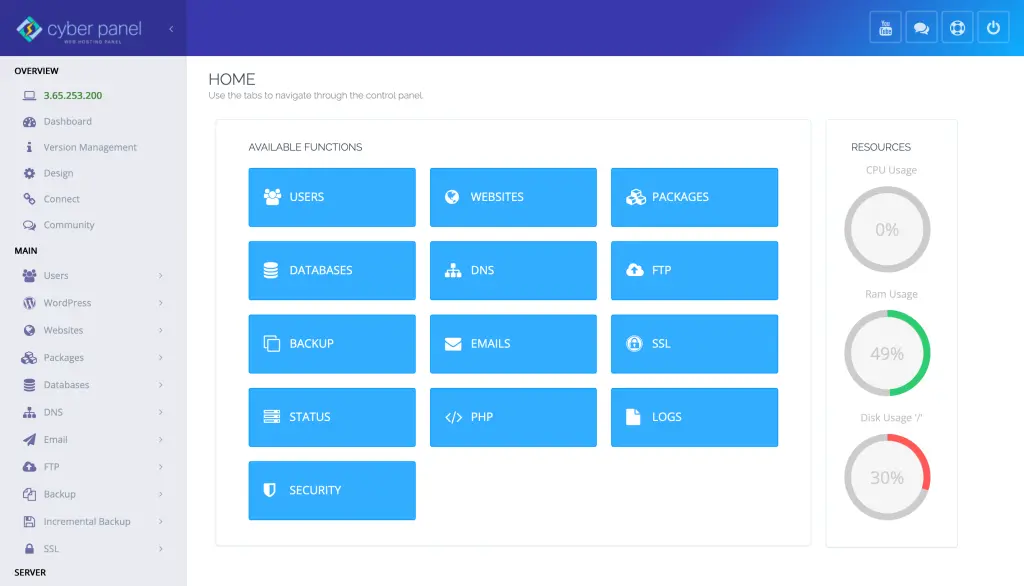For practical infrastructure as a code (IaC) management using Terraform, it is vital that deployments across teams and even environments are consistently predictable. This is where the Terraform lock file comes into play and becomes your best friend. If you haven’t faced surprises where a Terraform provider version has changed without a hint of it changing at all, then you really have no idea how chaotic that can become. Dependable consistency isn’t just nice to have; it’s really pretty essential to sound infrastructure operations.
Knowing the Terraform lock file helps you pin provider versions, avoid mismatches, and ensure reproducibility. This includes beginners who would want to really learn how to configure their very first module, to the ones who have mastered and have gotten so much advanced development beyond just environments used for production, thus learning dependency lock-file terraform-how-tos can greatly help you as future relocation headaches go.
This guide is going to comprise everything – it’s going to answer: what a Terraform dependency lock file is, why one should commit a Terraform lock file to their repositories, and lastly, how to troubleshoot certain common errors, including a Terraform inconsistent dependency lock file. Let’s get into it and prep your Terraform deployments to be rock solid!
What Is a Terraform Lock File?
Terraform automatically generates a Terraform lock file when you initialize a project with:
terraform initIt notes the precise versions and cryptography checksums for providers in the project.
Example snippet from a .terraform.lock.hcl:
provider "registry.terraform.io/hashicorp/aws" {
version = "4.67.0"
constraints = ">= 3.0.0"
hashes = [
"h1:xXxXxXxXxXxXxXxXxXxXxXxXxXxXxXxXxXxXxXxXx",
]
}It makes sure that every member of your team uses the same provider version, no matter where or when the code runs.
Get exclusive access to all things tech-savvy, and be the first to receive
the latest updates directly in your inbox.
Why You Should Commit the Terraform Lock File
You now ponder – really, should the Terraform lock file be committed into your Git repo? Answer: Absolutely, YES!
- Consistency: Everyone in your team uses the same version of the provider.
- Security: Verifies provider checksums, which keep tampered packages out.
- Predictability: It would behave the same way regardless of the machine used or the environment.
Thus, by committing the .terraform.lock.hcl file, you enforce reproducibility and reduce “but it worked on my machine” problems.
Dependency Lock File Terraform: How it Works
When you run terraform init, what it does is:
- It downloads the providers needed.
- Creates/upgrades the dependency lock file for Terraform.
Every time a new provider is added or its version is changed, Terraform rewrites the .terraform.lock.hcl.
Conflicts might occur when team members merge code without updating the lock file. So, always remember to run terraform init after pulling the changes!
Important:
- Use the Terraform providers lock (Terraform 1.1+) to regenerate lock files manually if required.
- Never edit the lock file by hand.
Terraform Inconsistent Dependency Lock File Error: How to Fix It
In case you face the dreaded:
Error: Inconsistent dependency lock fileNormally, it means that the lock file does not match the configuration of your .tf.
How to repair it:
Re-run:

terraform init -upgradeOr delete .terraform.lock.hcl and re-initialize:
rm .terraform.lock.hcl
terraform initThough removing should be the last resort, try to fix or regenerate the lock.
Best Practices for Terraform Dependency Lock Files
- The lock file must always be committed along with a code change.
- Run terraform init after pulling the new changes.
- Upgrade providers in a deliberate manner using terraform init -upgrade.
- Checksum mismatches bear serious consideration; they could indicate security threats.
- Do not manually edit .terraform.lock.hcl.
Real Life Scenario: Full Terraform Process with Lock File
Let’s assume you are configuring AWS infrastructure.
Initialize:
terraform initCheck .terraform.lock.hcl generated:
cat .terraform.lock.hclCommit both:
cat .terraform.lock.hclPull changes later:
git pull origin main
terraform initThis guarantees that the AWS provider version is consistent across all team members.
Importance of Terraform Lock File in Enterprise Settings
In large organizations, management of the Terraform lock file is mission-critical.
- The silent upgrade of the provider could potentially break production.
- It smoothly passes through audit and compliance checks.
- It helps the CI/CD pipeline duplicate the same environment at all times.
Very large teams even automate the lock file verification in their CI/CD by using random custom scripts!
How CyberPanel Provides Aid in Terraform Project Management

Managing the backend environments where this tool runs is as influential as using Terraform in making real infrastructure provisioning. CyberPanel, i.e., web hosting control panel, has a significant supportive role here:
- Server Management: CyberPanel allows setting up and managing Ubuntu or CentOS servers quickly, where one can deploy and test Terraform projects.
- Automated Backups: Protect your Terraform configurations and lock files by making a schedule for automated backups through the CyberPanel dashboard.
- Web Terminal Access: Run terraform init and other Terraform commands directly from CyberPanel’s integrated Terminal, eliminating the need for external SSH clients.
- File Manager: Quickly upload, edit, or recover your Terraform dependency lock file and project scripts using CyberPanel’s own graphical file manager.
In the end, CyberPanel takes away from you the hassle of managing servers on which your Terraform code and lock files live and helps in maintaining consistency while minimizing the chances of errors like a Terraform inconsistent dependency lock file.
FAQs: Terraform Lock File
1. What happens if I don’t commit Terraform lock file?
Inconsistent provider versions make deployments unpredictable.
2. What is the fix for Terraform’s inconsistent dependency lock file errors?
Run terraform init -upgrade or delete and regenerate .terraform.lock.hcl.
3. Should I edit the Terraform dependency lock file manually?
No. Always let Terraform generate or update it.
4. What difference does the dependency lock file terraform have from package-lock.json in Node.js?
The mechanisms are conceptually similar—they both pin the version of a dependency and ensure its availability.
5. Does Terraform lock file track modules too?
No. Only providers are tracked in .terraform.lock.hcl, not modules.
Final Thoughts: Secure Your Infrastructure with Terraform Lock File
An understanding of and further effective usage of Terraform lock files identifies layperson Terraform users from professional ones. Locking provider dependencies is needed for repeatable, safe, and scalable infrastructure management. Be it improper handling of Terraform inconsistent dependency lock file error, or ensuring clean deployments via dependency lock file, becoming a master in this aspect gives you a definite edge in the DevOps arena.
Secure your infrastructure today! Commit your Terraform Lock File and ensure hassle-free deployments across all your environments!



